6 Best Grass Types for Kentucky
BY RELA CATUCOD | APRIL 28TH, 2023 | KENTUCKY, LAWN CAREKentucky, a state situated in the transition zone, offers homeowners various grass types to cultivate a lush lawn. The Bluegrass State boasts picturesque landscapes, and whether you’re hosting family barbecues or playing a game of catch with your kids, selecting the best grass type for Kentucky is essential to creating the perfect environment for your favorite outdoor activities.
In this comprehensive guide, we’ll explore the best grass types for various regions throughout Kentucky (Eastern, Western, and Central Kentucky). We’ll discuss each turf’s characteristics, maintenance needs, and suitability for your specific lifestyle, ensuring you make the most informed decision for your lawn care.
- Cool-season Grasses vs. Warm-season Grasses
- 6 Best Grass Types for Kentucky
- FAQ About Kentucky Grass Types
- Choose Plant and Grass Varieties for Your Kentucky Landscape
Cool-Season Grasses vs. Warm-Season Grasses
For Kentucky homeowners aiming to cultivate the perfect lawn, it’s important to grasp the contrast between warm-season and cool-season grasses. While warm-season grasses flourish in high temperatures and become inactive during colder periods, cool-season grasses excel in temperate conditions and go dormant in sweltering summers and freezing winters.
Kentucky homeowners must choose suitable grasses for their climate. Both cool-season grasses, like Kentucky bluegrass and tall fescue, and warm-season varieties, such as bermudagrass and Zoysiagrass, can thrive in the state. Consider local weather patterns and specific lawn needs. This approach ensures a lush, healthy lawn year-round.
6 Best Grass Types for Kentucky
1. Kentucky Bluegrass
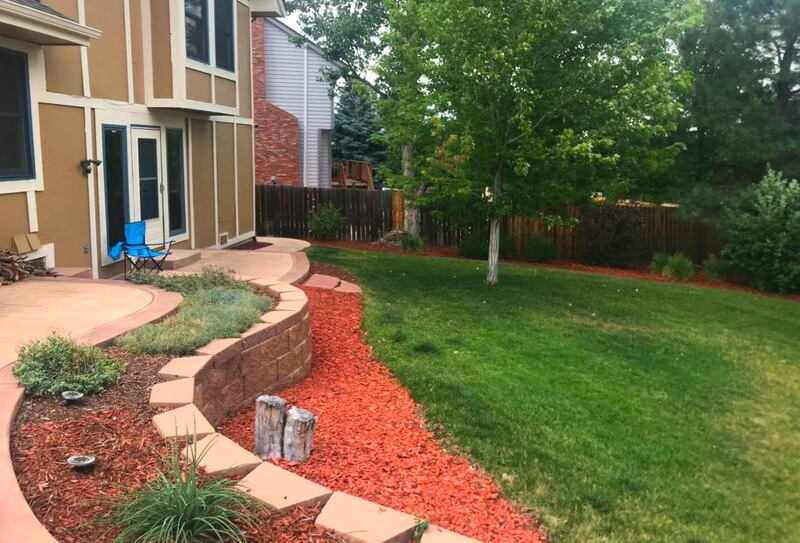
Photo Credit: Brenda Ryan / Wikilawn
Kentucky bluegrass is a favored choice for homeowners throughout the Bluegrass State, renowned for its durability and adaptability to regional climates. Ideal for outdoor events and family activities, this grass variety boasts a dense turf that recovers quickly from wear and tear, while enduring high foot traffic.
Displaying a rich, deep green hue, Kentucky bluegrass loves full sun exposure but struggles in shady areas. To maintain its pristine appearance, this type of grass requires attentive care, including regular mowing, watering, and fertilizer application.
This cool-season grass flourishes in East and Central Kentucky, thriving during the mild temperatures of spring and fall, and entering dormancy in extreme heat.
Classification: Cool-season grass
Spreads by: Rhizomes
Shade tolerance: Low
Drought resistance: Moderate
Foot traffic tolerance: Moderate
Maintenance needs: High; requires regular mowing, fertilization, and irrigation
Mowing height: Set mowing height between 2.5 inches and 3.5 inches
Potential for disease: Moderate; prone to lead spot, dollar spot, and summer patch
Potential for pests: Moderate; prone to sod webworms, aphids, thrips, and leafhoppers
Soil pH: 6 to 7.5
Soil type: Well-draining, fertile soil
Thrives in these regions: East and Central Kentucky Regions
Other notes: Kentucky bluegrass does not perform well in Western Kentucky. To ensure it thrives in your garden, mix it with two or more different cultivars.
2. Tall Fescue
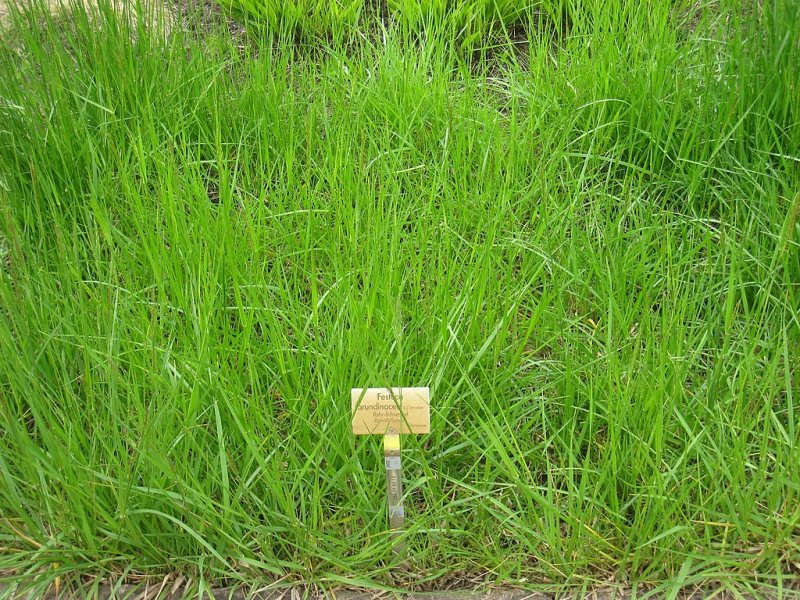
Photo Credit: Daderot / Wikimedia Commons / Public domain
For Kentucky homeowners in search of a flexible, low-maintenance lawn, tall fescue is a fantastic option. This heat-tolerant cool-season grass thrives in various soil types and sunlight conditions, making it ideal for the diverse terrains found across the Bluegrass State, from the Appalachian Mountains to the Mississippi River lowlands.
The resilience of tall fescue, combined with its minimal watering needs, suits active outdoor areas and helps conserve water during dry spells. Although it may require more frequent mowing, its innate resistance to pests, ability to outcompete weeds, and limited thatch accumulation ensure a lovely, low-hassle lawn perfect for Kentucky family gatherings, barbecues, and backyard games.
Classification: Cool-season grass
Spreads by: Produces short rhizomes but has a bunch-type growth habit
Shade tolerance: Moderate
Drought resistance: Moderate to High
Foot traffic tolerance: Moderate
Maintenance needs: Moderate; requires frequent mowing
Mowing height: Set mowing height to 2 inches when grass reaches 3 inches tall
Potential for disease: Low; has a high disease resistance when properly maintained
Potential for pests: Moderate; prone to armyworms, white grubs, and cutworms
Soil pH: 5.5 to 6.5
Soil type: Adaptable to various soil types like heavy clay or sandy soils; prefers clay soils with good drainage
Thrives in these regions: Statewide, particularly in the West Kentucky region
Other notes: Tall fescue has a slow recovery rate. Overseeding can enhance the lawn’s overall look and density when necessary.
3. Bermudagrass
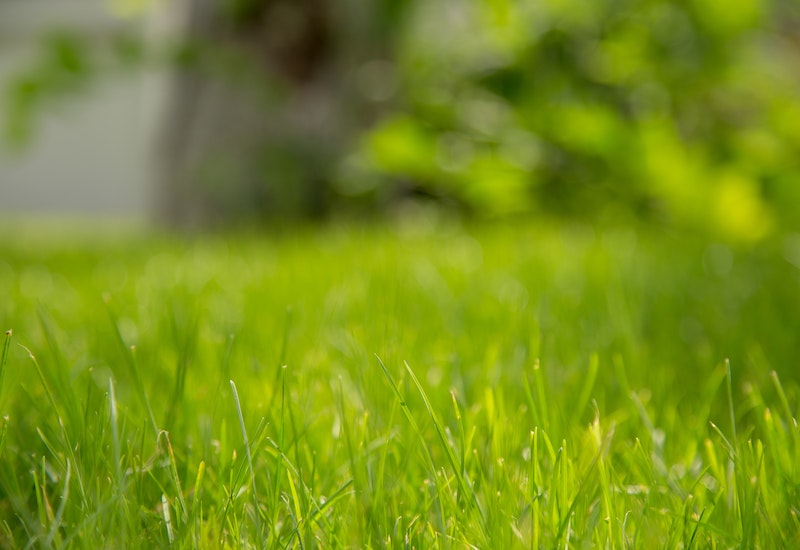
Photo Credit: Pexels
If you’re seeking a hardy and drought-tolerant lawn, bermudagrass is an excellent choice. Its fine to medium blades grow rapidly, creating a dense, green turf perfect for basking in the warm, sunny Kentucky summers and enjoying outdoor activities.
Bermudagrass thrives in the Western Kentucky, tolerating the heat and occasional droughts with ease. It’s also sturdy enough to withstand playtime with children and pets. Keep in mind, though, that to maintain its lush appearance, bermudagrass does require regular mowing and care.
Classification: Warm-season grass
Spreads by: Rhizomes and stolons
Shade tolerance: Low; thrives in full sun
Drought resistance: High
Foot traffic tolerance: High
Maintenance needs: Moderate; needs frequent mowing due to fats growth rate, develops thatch easily, needs regular fertilization
Mowing height: Set the mowing height between 0.5 and 1.5 inches for hybrid bermudagrass cultivars. Mow common bermudagrass down to 1.5 to 2.5 inches.
Potential for disease: Good resistance to disease, although diseases are common
Potential for pests: Low resistance to insects
Soil pH: 6 to 6.5
Soil type: Tolerates most soil types
Thrives in these regions: Western Kentucky
Other notes: Bermudagrass is a low-maintenance choice for homeowners, enjoying nitrogen and needing no mowing from October to April. Keep in mind, though, it can spread easily, turn brown during dormancy, and may be vulnerable to winter damage.
4. Zoysiagrass
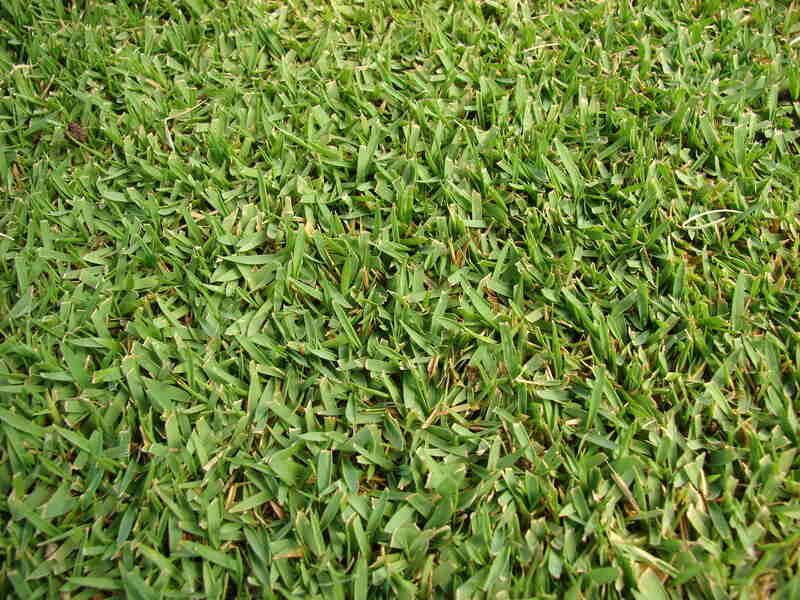
Photo Credit: Forest & Kim Starr / Wikimedia Commons / CC BY 3.0
Zoysiagrass, known for its fine texture and dense growth, is an excellent option for Kentucky homeowners seeking a stunning, resilient lawn. Requiring minimal water and nutrients, it’s ideal for conserving resources while enjoying a verdant turf perfect for warm summer months and outdoor events. Zoysiagrass thrives in areas, such as Louisville, where heat and drought are common.
With outstanding tolerance for heat, drought, and foot traffic, Zoysiagrass is well-suited for active households with rowdy children and big dogs. Keep in mind, though, that this grass variety grows slower than others, so patience is key when starting a new lawn or filling in bare areas.
Classification: Warm-season grass
Spreads by: Rhizomes and stolons
Shade tolerance: Moderate
Drought resistance: Moderate High
Foot traffic tolerance: High
Maintenance needs: Low nitrogen fertilization requirements, although, it’s prone to thatch build-up.
Mowing height: Set mowing height between 1 and 2 inches
Potential for disease: Good disease tolerance overall
Potential for pests: Moderate; grubs can cause serious damage
Soil pH: 6 to 6.5
Soil type: Adaptable to various soil types, prefers well-draining soils
Thrives in these regions: Western Kentucky
Other notes: Zoysiagrass establishes slowly, so patience is required when starting a new lawn.
5. Fine Fescue
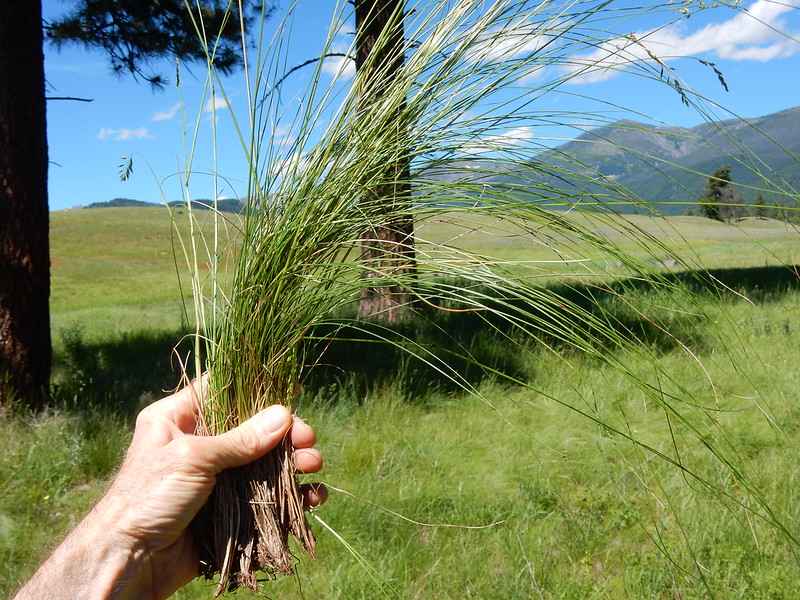
Photo Credit: Matt Lavin / Flickr / CC BY-SA 2.0
For Kentucky homeowners with shaded lawns or a desire for a low-maintenance landscape, fine fescue is the perfect cool-season grass. With excellent shade tolerance and minimal upkeep needs, these grasses can thrive in every region of Kentucky.
Imagine your fine fescue lawn providing a verdant backdrop for family barbecues, outdoor games, or simply enjoying the natural beauty of the Bluegrass State. With its easy going nature and adaptability, fine fescue offers Kentucky homeowners a welcoming and eco-friendly outdoor space.
Classification: Cool-season grass
Spreads by: Creeping red fescue spreads by rhizomes, while other fine fescues are bunch-type grasses, such as Chewings, hard, and sheep fescues.
Shade tolerance: Moderate to High; depending on species
Drought resistance: Moderate to High; depending on species
Foot traffic tolerance: Low to Moderate; depending on species
Maintenance needs: Low fertilizer and mowing needs
Mowing height: Set mowing height between 2.5 and 4 inches, depending on species.
Potential for disease: Moderate; common diseases include red thread, leaf spot, dollar spot, summer patch, and powdery mildew.
Soil pH: 6 to 6.5
Soil type: Will not perform well in wet soil conditions. Prefers drier soils and tolerates a wide range of soil types and fertility.
Thrives in these regions: Statewide
Other notes: Fine fescues are often used in grass seed mixtures with other cool-season grasses to improve shade tolerance and adaptability.
6. Perennial Ryegrass
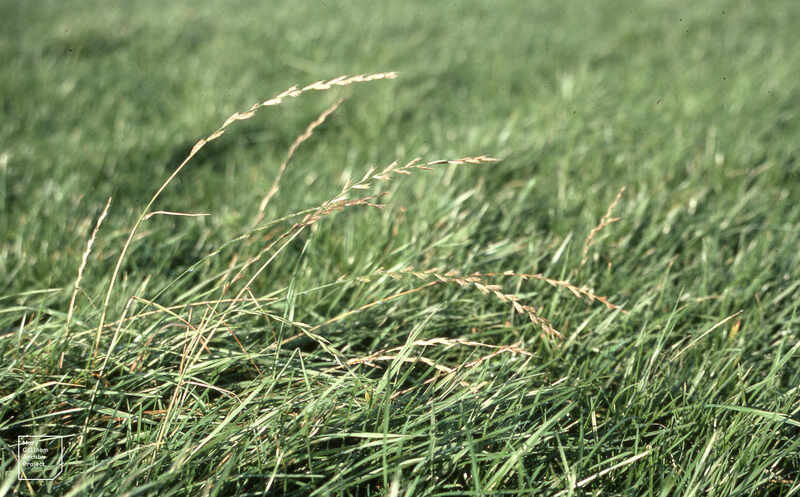
Photo Credit: Dr Mary Gillham Archive Project / Flickr / CC BY 2.0
Perennial ryegrass is a top pick for Kentucky homeowners desiring a beautiful, low-maintenance lawn. Its fine leaf texture, dark green hue, and quick germination make it perfect for a new lawn or filling bare spots, just in time for Derby season or a family cookout. Adaptable to various Kentucky regions, this type of grass thrives in areas with ample sunlight and well-draining soil.
What sets perennial ryegrass apart is its tolerance for high traffic and ability to outcompete some weeds, making it ideal for lively yards with kids or pets. Keep in mind that this grass requires a sharp mower for effortless mowing and summer watering to stay lush and healthy amidst Kentucky’s warm, humid weather.
Classification: Cool-season grass
Spreads by: Bunching
Shade tolerance: Low
Drought resistance: Low
Foot traffic tolerance: High
Maintenance needs: Moderate; regular mowing and fertilization are necessary
Mowing height: Set mowing height to 1.5 to 2.5 inches
Potential for disease: High; prone to gray leaf spot, red thread, and leaf spot/melting-out
Potential for pests: Moderate; prone to ants, sod webworm, thrips, and white grubs
Soil pH: Can grow in soils with a pH between 5 and 8, but prefers between 6 and 7
Soil type: Prefers good drainage and fertility, but can tolerate some poor drainage
Thrives in these regions: Statewide
Other notes: This grass type is great for homeowners who want a shorter, well-manicured lawn. However, be mindful of its limited heat tolerance, which may require extra care during Louisville’s scorching summers.
FAQ About Kentucky Grass Types
What are the best grass types for Louisville?
The best grass types for Louisville include:
- Kentucky Bluegrass
- Perennial Ryegrass
- Tall Fescue
- Zoysiagrass
- Bermudagrass
How do I choose the right grass type for the Lexington area?
Consider factors such as climate, soil type, shade tolerance, and maintenance requirements. Kentucky bluegrass and fine fescues are popular choices in Lexington.
Can I mix different grass types for my lawn in Bowling Green?
Yes, mixing grass types can create a more resilient and versatile lawn. For example, Kentucky bluegrass can be blended with fine fescue or perennial ryegrass for improved performance.
Choose Plant and Grass Varieties for Your Kentucky Landscape
When selecting a grass type for your Kentucky lawn, consider the following factors:
- Climate: Choose a grass type that thrives in your region’s temperature and precipitation patterns.
- Soil type: Ensure the grass type you select is compatible with your soil’s texture and pH level.
- Shade tolerance: Assess the amount of shade in your yard and choose a grass type that can thrive in those conditions.
- Foot traffic tolerance: Consider your family’s outdoor activities and select a grass type that can withstand the wear and tear.
- Maintenance needs: Be realistic about the amount of time and effort you can dedicate to lawn care, and choose a grass type that matches your maintenance preferences.
Incorporating low-maintenance landscaping ideas and selecting Kentucky’s best native plants will create a more sustainable and eco-friendly yard. Looking for a lawn care pro near you? We have trusted lawn care pros in Louisville, Lexington, and many more cities across the state.
Main Photo Credit: PxHere